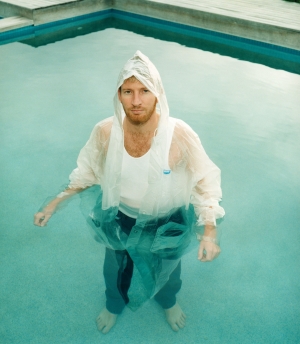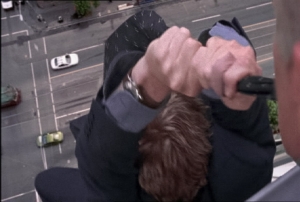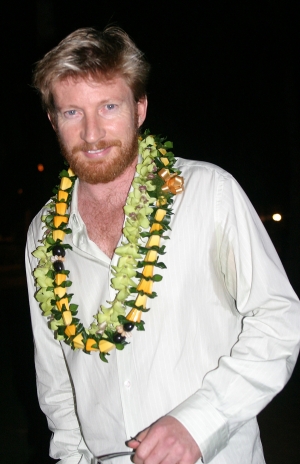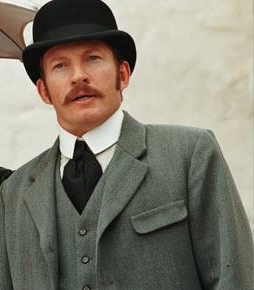Now Playing: "1984 Blues" - Austin Lounge Lizards
Months before the release of 300, the internet discussion boards are all abuzz with controversy over historical inaccuracies in the film.
As many people have rightly pointed out, it's a silly debate - the movie is based on a comic book, NOT on actual history. '300' is a recreation of a graphic interpretation of a historic event. It's not even a factual, omniscient retelling. Both book and movie are framed by an unseen narrator (possibly Dilios, recapping the story several months later at a war council?), who isn't shy about taking dramatic liberties with the plot in order to fire up the listener's imagination.
In the film, Dilios' narration receives greater emphasis. Zach Snyder wanted to demonstrate that the surreal Frank Miller world of 300 was the result of artistic license in Dilios' retelling of the story. All oral story forms exaggerate in order to heighten the drama. The storytelling tradition of Herodotus and the ancient Spartans was especially rich in oracle, epigram, and visual detail. So it's perfectly plausible that through Dilios' eyes (or eye, rather), the battle at the Hot Gates becomes a heroic fantasy saga peopled with orcs and rhinos and hookers and hunchbacks.
Of course, inventing creatures and inserting them into the story isn't just a rhetorical device. Dehumanizing the enemy and portraying them as hellish monsters is a time-honored military tradition which not only elevates your own side's heroism and moral legitimacy, but also justifies killing total strangers. Wiping out a bunch of conscripted slaves isn't that exciting, but if they're seven feet tall and wearing metal masks and accompanied by screaming banshees and hulking black animals, now you're talking real save-the-world heroics.
So if Dilios is in charge of interpreting the story for us, there's yet another reason not to hold '300' to a rigorous historical standard. It also suggests that either Dilios has quite an interesting imagination, or he's been inhaling Delphic oracle vapors. Yes, the Spartans weighed 400 pounds and had flying robot cheetahs with laser beams shooting out of their nostrils! And then there was a huge earthquake and we were attacked by demon monkey spirits from the underworld! I turned invisible and learned Ghost Kung Fu in thirty seconds! It was totally awesome!
As for the costumes, or lack of, there's been lots of grumbling among purists regarding the teeny leather Speedos. It is true that Spartans trained in the nude, and wore heavy armor into battle. Frank Miller's interpretation was heavily influenced by depictions of ancient Greek warriors on urns and classical art which glorified the male body. See, for example, Jacques-Louis David's 1814 painting "Leonidas at Thermopylae", which I would post here, except that disk space is running low at the moment.
It is also true that Sparta was a very physical culture which placed a great deal of emphasis on athletics, fitness, gymnastics, and dancing, over more cerebral pursuits like music and literature. Discipline was rigorous and corporeal. There were competitions to see who could take the most severe flogging, an ordeal known as diamastigosis.
In that respect, Frank Miller's novel accurately captures the unforgiving physical essence of Spartan culture. Under Leonidas' command, captains push their subordinates to the limits of pain, and harsh punishments are routinely meted out for minor displays of weakness or rebellion. Somehow, clothing and armor seems out of place in such a bare and brutal environment.
Far be it from me to complain about Frank Miller's artistic depiction of the Spartans. Accuracy, schmaccuracy. I'm perfectly comfy with the idea of nearly-nakey men marching into battle dressed like Ian Thorpe.







